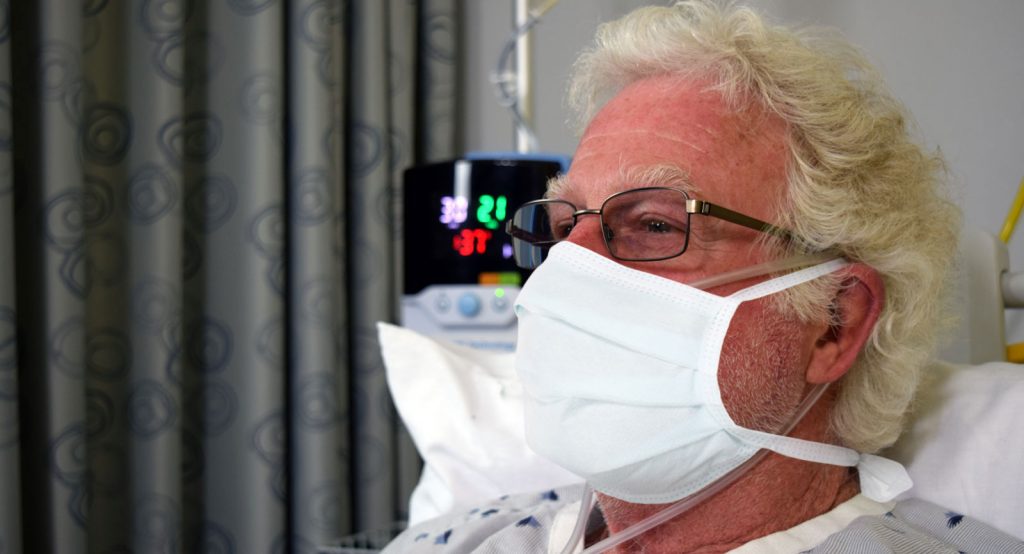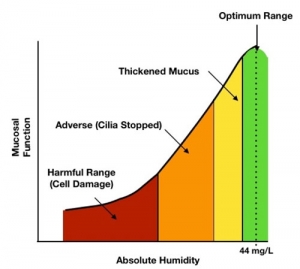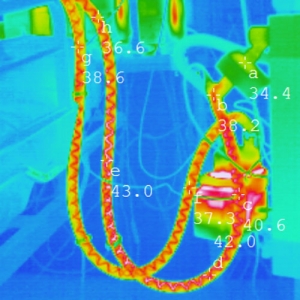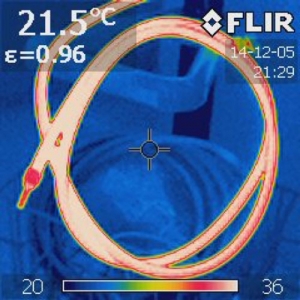The Need for Airway Humidification in COVID-19 Patients

The primary clinical concern in many COVID-19 pneumonia cases is meeting the patients’ oxygen needs. But as with respiratory infections in general, ensuring proper airway humidification could also be crucial in successfully managing these patients.
The Dangers of Insufficient Airway Humidification
It is well-known that for the respiratory system to function optimally and for alveolar gas exchange to happen, the inhaled gas has to be near 100% relative humidity. [1] A healthy airway heats and humidifies each breath in order to preserve its functionality and ability to defend from pathogens through mucociliary clearance. If there is insufficient heat and humidity, the mucociliary elevator can become compromised and even damaged. Figure 1 shows this relationship between humidity and optimal mucosal function.

COVID-19 Management
The symptoms of a viral pneumonia can compromise mucosal function in and of themselves. In the case of COVID-19, current recommendations for management call for the restriction of fluids under certain conditions [2] —something that could further challenge that patient’s ability to heat and humidify their airway.
What could help address this management challenge is that many guidelines also call for the use of high flow oxygen for these patients. The tools that fall under this umbrella provide heated and humidified oxygen flows. A recent literature review noted that heated and humidified high flow oxygen provided to adults in respiratory distress is associated with better tolerance/comfort, improved mucociliary function, greater secretion clearance, and prevention of lung collapse, among other benefits. [3]
Considerations for High Flow Oxygen Humidification
Because optimal humidification is beneficial for this patient population, it’s important to know that not all devices which fall under the high flow oxygen umbrella deliver humidification in the same way.
Many commodity high flow nasal cannula devices use pass-over humidification—a process where breathing gas passes over highly heated water to add moisture and humidify the gas. Devices using this method use higher than set temperatures in both the creation and maintenance of humidification. They then use a heated wire circuit to deliver the humidified gas to the patient. The common downside of this design is that because the tube isn’t heated uniformly, rainout can happen when gas comes into contact with cooler surfaces.
An alternative method used by Vapotherm high velocity therapy is membrane humidification. In this process water molecules are delivered to the gas path across a membrane to produce medical grade vapor without high heat. This vapor’s heat and humidity are then kept energetically stable all the way to the patient via a warm water jacket insulated delivery tube. The tube feels warm—near body temperature—and patients will not get burned even if prolonged skin contact happens.
Figure 2 shows the heat signatures of the two delivery methods side by side. It is clear that the high velocity therapy tube was designed to ensure that the gas remains humidified and doesn’t lose heat or humidity via rainout on the way to the patient.
Understanding the importance of optimal airway humidification is one of the factors that could help healthcare workers in successful management of complex patients, like COVID-19 patients.
Visit our COVID-19 Resource Center for up-to-date answers to additional frequently asked questions.
REFERENCES
[1] Williams R, Rankin N, Smith T, Galler D, Seakins P. Relationship between the humidity and temperature of inspired gas and the function of the airway mucosa. Critical care medicine. 1996;24(11):1920-1929.
[2] Alhazzani W, Moller MH, Arabi YM, et al. Surviving Sepsis Campaign: guidelines on the management of critically ill adults with Coronavirus Disease 2019 (COVID-19). Intensive care medicine. 2020; Un-edited accepted proof.
[3] Roca O, Hernandez G, Diaz-Lobato S, et al. Current evidence for the effectiveness of heated and humidified high flow nasal cannula supportive therapy in adult patients with respiratory failure. Critical care. 2016;20(1):109.

